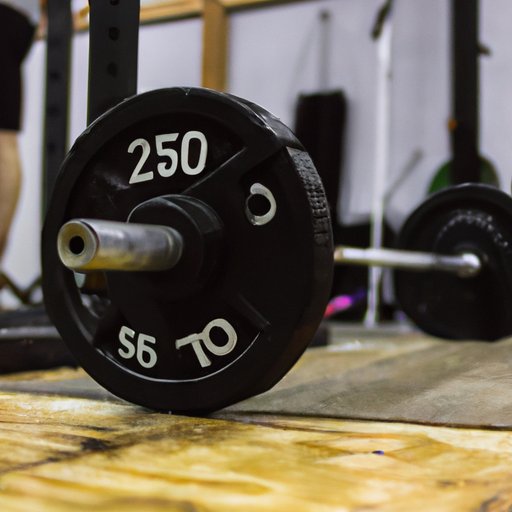Introduction
Weightlifting is a great way to build strength, increase muscle mass, and improve overall health. It’s also an intimidating endeavor that can be difficult to navigate if you don’t know where to start. In this article, we’ll explore how to get started with weightlifting safely and effectively. We’ll cover everything from understanding your goals to choosing the right equipment to mastering proper form, and more.
Understand Your Goals
Before you begin lifting weights, it’s important to understand your goals. Are you looking to build strength? Increase muscle mass? Improve your overall health? Knowing what you want to accomplish will help you focus your efforts and set realistic goals for yourself. According to a study published in the journal Sports Medicine, “Setting clear goals and objectives is essential for successful performance.”
Once you’ve identified your goals, you’ll need to decide how best to reach them. Do you want to join a gym or work out at home? Do you prefer to work out alone or with a partner? These are important questions to consider before you start lifting weights.
Choose the Right Equipment
Investing in quality weights, barbells, and dumbbells is essential for any weightlifter. Cheaply made equipment can be dangerous, so it’s important to choose products that are designed for safety and durability. If you’re working out at home, it’s also important to make sure you have enough space for your equipment. You’ll need enough room to move around safely and comfortably.
When choosing weights, it’s important to select ones that are appropriate for your level of experience. If you’re just starting out, you may want to opt for lighter weights so you can learn proper form without risking injury. As you become more experienced, you can gradually increase the weight you’re lifting.
Learn Proper Form
Learning proper form is essential for any weightlifter. Not only will proper form help you avoid injury, but it will also ensure that you’re targeting the right muscles and getting the most out of your workout. A study published in the journal Applied Physiology, Nutrition, and Metabolism found that “Proper exercise technique is essential for safety and optimal results.”
To master proper form, you’ll want to focus on posture, breathing, and movement. Make sure to keep your back straight and your core engaged throughout the exercise. Take a deep breath before each rep and exhale as you lift. And focus on using slow, controlled movements to target the correct muscles.
Start With Bodyweight Exercises
Before you start lifting weights, it’s a good idea to master bodyweight exercises. This will help you build strength and get comfortable with the movements before adding additional weight. Bodyweight exercises also offer a great way to warm up before a weightlifting session.
Some examples of bodyweight exercises include push-ups, squats, lunges, planks, and burpees. These exercises can be modified to fit your fitness level and add variety to your routine.
Increase Weight Gradually
When you’re ready to start lifting weights, it’s important to start with light weights. This will help you get used to the movements without risking injury. As you become more comfortable, you can gradually increase the weight you’re lifting. According to a study published in the journal PLOS ONE, “Gradual increases in load should be employed over time to maximize strength gains.”
It’s also important to remember that everyone’s body is different and progresses at its own pace. Don’t compare yourself to other people or try to lift too much too soon. Focus on challenging yourself while still maintaining proper form.
Rest Between Workouts
Taking time to rest between workouts is essential for any weightlifter. Rest allows your muscles to repair and rebuild, which helps to prevent injury and maximize results. According to a study published in the journal Frontiers in Physiology, “Rest days are necessary for muscle recovery and adaptation, both of which are vital for long-term success.”
Most experts recommend one to two days of rest between weightlifting sessions. This will give your muscles time to recover and will help you stay energized and motivated for your next workout.
Monitor Your Progress
Tracking your progress over time is an important part of any weightlifting routine. By monitoring your progress, you can see how far you’ve come and make adjustments to your routine as needed. A study published in the journal Sports Medicine found that “self-monitoring has been shown to be effective in promoting behavior change.”
You can track your progress by taking measurements, recording your workouts, and noting any changes in your energy levels or mood. This will help you stay motivated and focused on reaching your goals.
Conclusion
Weightlifting can be an intimidating endeavor, but it doesn’t have to be. To get started, you’ll need to understand your goals, choose the right equipment, learn proper form, start with bodyweight exercises, increase weight gradually, take time to rest between workouts, and monitor your progress. With the right approach and dedication, you can achieve great results.
(Note: Is this article not meeting your expectations? Do you have knowledge or insights to share? Unlock new opportunities and expand your reach by joining our authors team. Click Registration to join us and share your expertise with our readers.)
